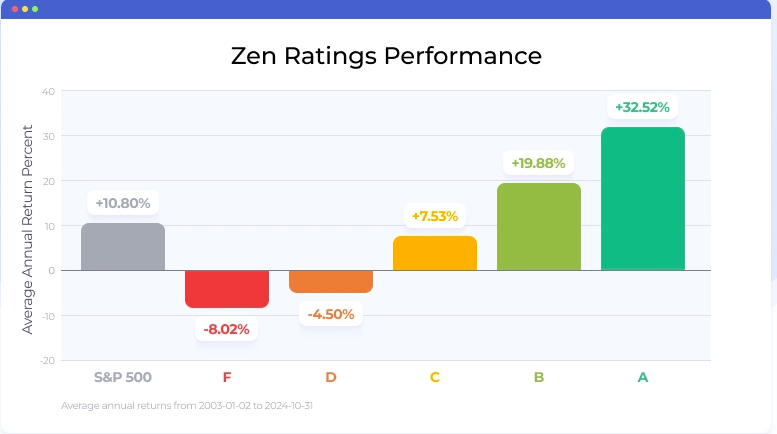20 Recommended Ideas For Choosing AI Stock Prediction Websites
20 Recommended Ideas For Choosing AI Stock Prediction Websites
Blog Article
Top 10 Ways To Assess Ai And Machine Learning Models For Ai Platform Analysis And Stock Prediction
Analyzing the AI and machine learning (ML) models employed by stock prediction and trading platforms is essential in order to ensure that they are accurate, reliable, and actionable insights. Models that have been poor-designed or over-hyped can lead to inaccurate forecasts and financial losses. Here are the top 10 methods to evaluate AI/ML models that are available on these platforms.
1. Understanding the model's purpose and approach
The objective clarified: Identify the purpose of the model whether it's for trading at short notice, investing long term, sentimental analysis or a way to manage risk.
Algorithm Transparency: Check if the platform discloses what types of algorithms they employ (e.g. regression, neural networks for decision trees and reinforcement-learning).
Customizability: Determine whether the model can be adapted to your particular trading strategy or risk tolerance.
2. Measure model performance metrics
Accuracy. Find out the model's ability to forecast, but do not depend on it solely since this could be inaccurate.
Recall and precision: Determine how well the model can identify real positives (e.g., correctly predicted price changes) and eliminates false positives.
Risk-adjusted results: Evaluate if model predictions lead to profitable trading in the face of the accounting risks (e.g. Sharpe, Sortino and others.).
3. Make sure you test your model using backtesting
Performance historical: Test the model with historical data to check how it performs under previous market conditions.
Test the model on data that it hasn't been trained on. This will help stop overfitting.
Analysis of scenarios: Evaluate the model's performance in different market conditions.
4. Check for Overfitting
Overfitting Signs: Search for models that perform extremely well when they are trained, but not so when using untrained data.
Regularization methods: Check if the platform uses methods like regularization of L1/L2 or dropout to prevent overfitting.
Cross-validation is a must: the platform should use cross-validation when assessing the generalizability of the model.
5. Review Feature Engineering
Relevant features: Determine whether the model incorporates important features (e.g., volume, price, sentiment data, technical indicators macroeconomic variables).
Selection of features: Make sure that the system selects features that are statistically significant and avoid redundant or irrelevant data.
Dynamic feature updates: See whether the model adjusts in time to new features or changing market conditions.
6. Evaluate Model Explainability
Interpretation - Make sure the model offers the explanations (e.g. the SHAP values or the importance of a feature) for its predictions.
Black-box models can't be explained Beware of systems that use complex models, such as deep neural networks.
User-friendly insights : Determine if the platform provides actionable information in a format that traders can easily understand.
7. Examine the adaptability of your model
Changes in the market: Check that the model is able to adjust to changing market conditions (e.g., changes in regulations, economic shifts or black swan-related events).
Continuous learning: See if the model is updated frequently with new data in order to boost the performance.
Feedback loops. Make sure that your model takes into account feedback of users and actual scenarios to enhance.
8. Be sure to look for Bias & Fairness
Data bias: Ensure that the information provided within the program of training is real and not biased (e.g., a bias towards certain sectors or periods of time).
Model bias: Determine whether the platform is actively monitoring and corrects biases within the predictions of the model.
Fairness: Make sure whether the model favors or disfavor specific trade styles, stocks or particular industries.
9. Examine the computational efficiency
Speed: Find out if your model is able to generate predictions in real-time or with minimal delay, especially for high-frequency trading.
Scalability: Determine if a platform can handle many users and huge databases without affecting performance.
Resource usage: Check whether the model is using computational resources effectively.
Review Transparency, Accountability, and Other Problems
Model documentation: Verify that the platform offers comprehensive documentation on the model's architecture, the training process and its limitations.
Third-party audits : Confirm that your model was audited and validated independently by third-party auditors.
Error Handling: Check if the platform is equipped with mechanisms that detect and correct errors in models or malfunctions.
Bonus Tips
User reviews Conduct user research and conduct cases studies to evaluate the effectiveness of a model in actual life.
Trial period: Use the free demo or trial to test the models and their predictions.
Support for customers: Ensure whether the platform offers solid customer support that can help solve any product-related or technical issues.
These tips will help you assess the AI and machine learning algorithms employed by stock prediction platforms to ensure they are reliable, transparent and compatible with your goals for trading. View the most popular investing ai hints for website info including ai for investment, ai for stock trading, ai investing, best ai for trading, AI stock picker, stock ai, trading ai, market ai, market ai, ai trading and more.
Top 10 Tips To Evaluate The Speed And Latency Of Ai Stock Predicting/Analyzing Trading Platforms
When you are evaluating AI trading platforms which predict/analyze stock prices speed and latency are crucial factors, especially for high-frequency and algorithmic traders. Even milliseconds can affect the execution of trades and even profitability. Here are the top 10 guidelines to evaluate the latency and speed of these platforms.
1. Real-time data feeds to be analyzed
Data delivery time: The platform must provide real-time, accurate data within an extremely short time (e.g. with sub-millisecond delay).
Closeness of the data source: Find out whether servers are close to major exchanges.
Data compression: Determine whether your platform uses efficient techniques for data compression to speed up the speed of data transfer.
2. Test Trade Execution Time
Order processing time: Measure how quickly the platform handles and executes trades when you submit an order.
Direct Market Access: Verify that the platform you are using offers DMA. DMA is a feature that allows you to send orders directly to exchanges without intermediaries.
Review the execution reports to determine the timestamps on order confirmation fill, submission, and confirmation.
3. Examine the Platform's Responsiveness
User interface (UI speed) Test how quickly the platform responds to inputs, such as clicking buttons or loading charts.
Chart updates: Verify if charts and visualizations update in real-time without lag.
Performance of mobile apps: If you are using a mobile application make sure it runs just as fast as a desktop version.
4. Verify that the infrastructure is not low-latency.
Servers' location: Make sure the platform is using low-latency servers that are close to exchanges and financial hubs.
Co-location services: Find out if the platform offers colocation services that allow the hosting of your trading algorithm on servers near to the exchange.
High-speed networks: Verify that the platform utilizes fiber-optic networks that are high-speed or low-latency technologies.
5. Assess the Backtesting and Simulation speed
Historical data processing: Check how fast the platform analyzes and processes historical data for backtesting.
Simultaneous trade simulation: The platform should be capable of simulating trading in real-time without obvious delays.
Parallel processing (or distributed computing) Learn if a platform uses the concept of parallel processing or distributed processing in order to speed up complex calculations.
6. Check API Latency
API response time: Check how quickly the platform's API responds to requests (e.g. getting market information, or placing orders).
Rate limits. Check to see if there are reasonable limits on the API. This will aid in preventing delays during high-frequency transactions.
WebSocket Find out if your platform supports WebSocket protocols which permit streaming data in real time with low latency.
7. Test Platform Stability with Load
Trading scenarios with high volume Test the platform's stability and responsiveness by simulating trading scenarios.
Market volatility: Make sure your platform is able to handle price fluctuations in times of high volatility.
Test your strategies for stress: See whether the platform provides tools to test your strategies in extreme conditions.
8. Evaluation of Network and Connectivity
Internet speed requirements: Make sure your internet connection has the speed recommended by your internet provider to achieve the best performance.
Reliable connections: Make sure that the platform can support redundant internet connections to prevent downtime.
VPN latency: If using a VPN be sure to check whether it causes significant latency and whether the platform has alternatives.
9. Check for speed optimization features
Pre-trade Analytics: Be sure the platform offers pre-trade analysis to optimize order routing, execution speed and many other aspects.
Smart order routing: Check whether your platform uses SOR to locate the fastest and most cost-effective execution venue.
Monitoring latency: Verify if the platform provides tools for monitoring and analyzing latency in real time.
10. Review User Feedback and Benchmarks
User reviews: Read the feedback of users to determine the platform's performance in terms of speed and latency.
Third-party Benchmarks: Search for independent benchmarks that compare the speed of a platform to its rivals.
Case studies: Ask the platform if it has cases studies or reviews that demonstrate its capabilities for low latency.
Bonus Tips
Trial period: Take advantage of an unpaid trial or demo to evaluate the platform's performance and latency in real-world scenarios.
Customer Support: Make sure whether the platform offers support in latency-related problems or optimize.
Hardware requirements: Determine whether you require special hardware for optimal performance (e.g. high-performance PCs).
The following tips can assist you in evaluating the speed of AI trading platforms that forecast or analyze stock prices. It will allow you to select a platform for trading that best meets your needs in trading and reduces delay. Low latency can be crucial for algorithmic or high-frequency traders where even small delays could affect their profits. Follow the top next page on best AI stocks for blog tips including ai in stock market, ai options, best stock prediction website, stock trading ai, trading ai tool, trading ai tool, ai options, chart analysis ai, best AI stock prediction, ai tools for trading and more.